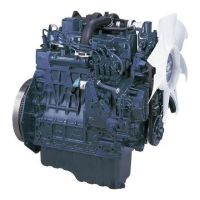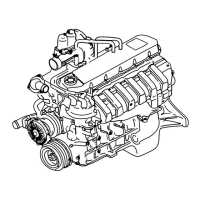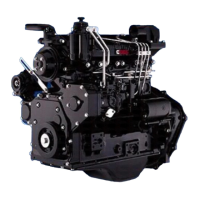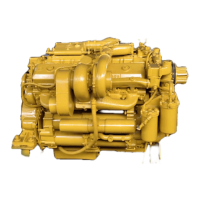What to do if the air cleaner element is broken in Komatsu 82E Engine?
- JJanet FergusonAug 7, 2025
If the air cleaner element of your Komatsu Engine is clogged, broken, or has a defect at the seal, you should clean or replace it.

What to do if the air cleaner element is broken in Komatsu 82E Engine?
If the air cleaner element of your Komatsu Engine is clogged, broken, or has a defect at the seal, you should clean or replace it.
What to do if there is a gas leak from the cylinder head gasket in Komatsu 82E Engine?
If there is a gas leak from the cylinder head gasket in your Komatsu Engine, replace the gasket and retighten the cylinder head bolts to the specified torque.
What to do if Komatsu Engine has excessive valve clearance?
If your Komatsu Engine has excessive or no valve clearance, you should adjust it.
What to do if intake/exhaust valve has gas leak in Komatsu Engine?
If there is a gas leak in your Komatsu Engine due to a worn valve seat or foreign matter trapping, or if the valve is sticking, lap the valve seat and replace the intake/exhaust valve.
What to do if piston ring has gas leak in Komatsu 82E Engine?
If there is a gas leak in your Komatsu Engine due to scratching or wear on the piston, piston ring, or cylinder, perform honing and use an oversized part.
| Rated RPM | 2000 rpm |
|---|---|
| Number of Cylinders | 6 |
| Bore | 125 mm (4.92 in) |
| Stroke | 150 mm (5.91 in) |
| Displacement | 11.04 L (674 cu in) |
Manual introduces service procedures for 82E-5-98E-5 engines, advising caution on variations.
Explains the meaning of safety symbols like DANGER, WARNING, CAUTION, and NOTICE used in the manual.
Outlines essential safety precautions for the service area, lighting, and equipment.
Details the scope of the manual, covering troubleshooting, maintenance, and operation procedures.
Guides users on understanding manual elements like exploded views, diagrams, and step-by-step procedures.
Provides detailed technical specifications for various engine models including dimensions, power, and capacity.
Illustrates the external components and layout of the engine for identification.
Explains the structural features of 2-valve and 4-valve cylinder heads for emission and noise reduction.
Outlines a schedule for engine maintenance tasks based on hours of operation or time intervals.
Details daily checks and procedures for inspection and maintenance of engine components.
Specifies inspection tasks required every 50 operating hours, including fuel tank draining and water separator.
Guides on gathering information and preparing for troubleshooting to prevent accidents and extend engine life.
Provides a table summarizing common trouble symptoms, causes, and corrective actions for quick diagnosis.
Explains how to measure compression pressure to diagnose engine abnormalities like blowby or starting failure.
Covers general preparation and procedures for complete engine disassembly and reassembly.
Lists and illustrates special tools required for various disassembly and reassembly tasks on engine components.
Details the procedure for disassembling, inspecting, and reassembling the cylinder head assembly.
Specifies inspection and measurement standards for cylinder head components like valves and seats.
Illustrates the flow of lubricating oil through the engine system, including components like the oil filter and pump.
Provides standards for inspecting and measuring components of the trochoid oil pump, such as clearances.
Shows a diagram of the engine's cooling water system, including the thermostat, radiator, and pump.
Offers specific servicing advice for the cooling water pump bearing and thermostat function check.
Introduces the fuel injection pump, highlighting its importance for engine performance and precision requirements.
Details the step-by-step process for disassembling the fuel injection pump from the engine.
Explains the basic structure and functions of the turbocharger, including main specifications.
Outlines procedures for washing and inspecting turbocharger components like the turbine shaft and compressor impeller.
Provides a flowchart to diagnose and resolve common starting motor issues.
Details inspection methods for armature, field coil, brushes, and magnetic switch.
Lists the technical specifications for the 40A alternator, including output, voltage, and dimensions.
Covers visual inspection of the V-belt, wiring, and charge lamp circuit for proper alternator function.
Offers a troubleshooting guide for common alternator issues, focusing on charge lamp and voltage checks.
Presents the overall electric wiring diagram for the engine system, showing component connections.
Warns about improper wiring practices for alternator, starting motor, and current limiter to prevent damage.
Lists standard values and limits for engine tuning parameters like valve clearance, belt tension, and pressures.
Details service standards for engine body components, including cylinder head, gear train, and cylinder block.
Provides specific tightening torque values for critical engine bolts like cylinder head and connecting rod bolts.
Lists tightening torque specifications for general-purpose bolts and nuts used in the engine assembly.











